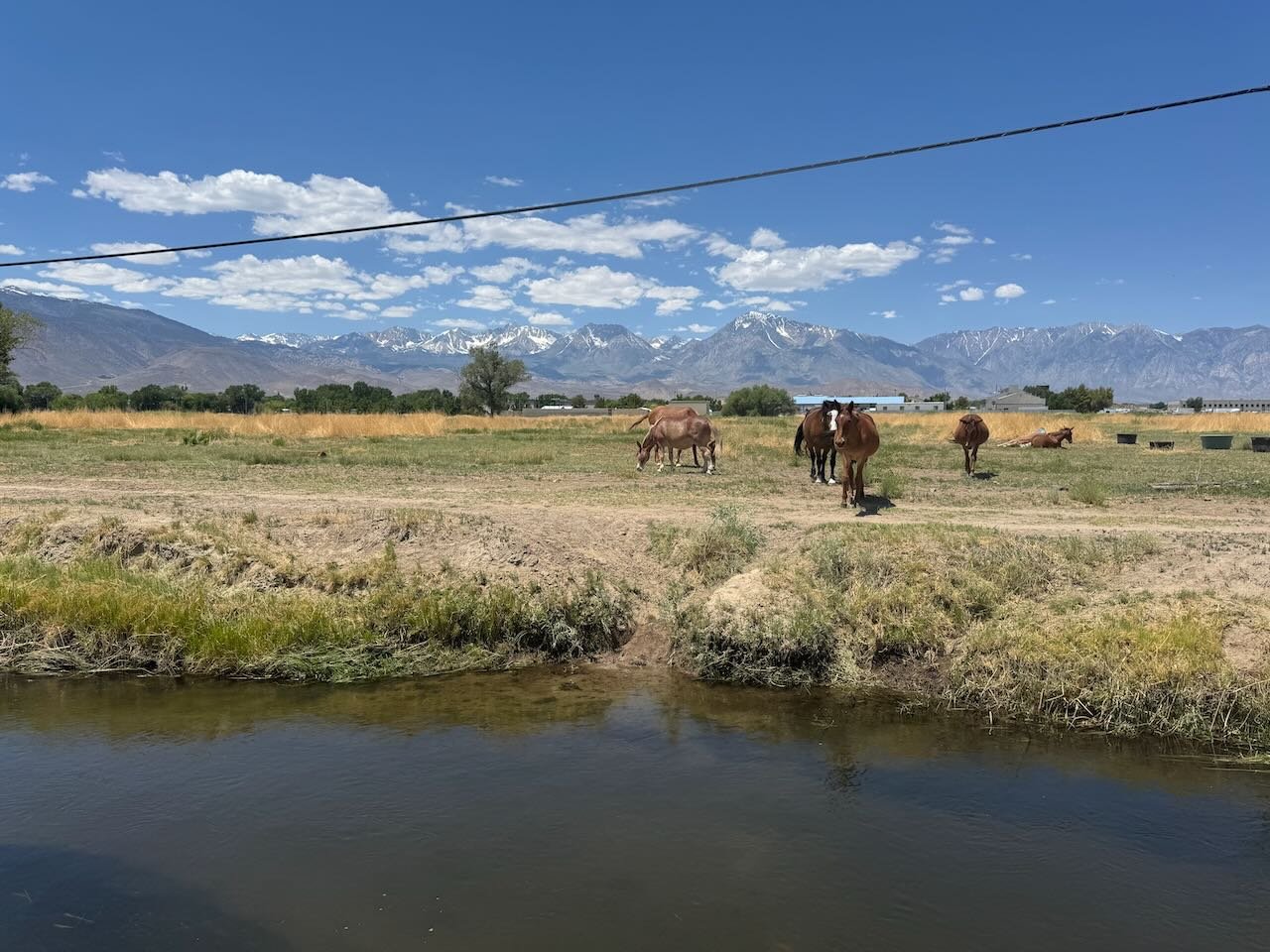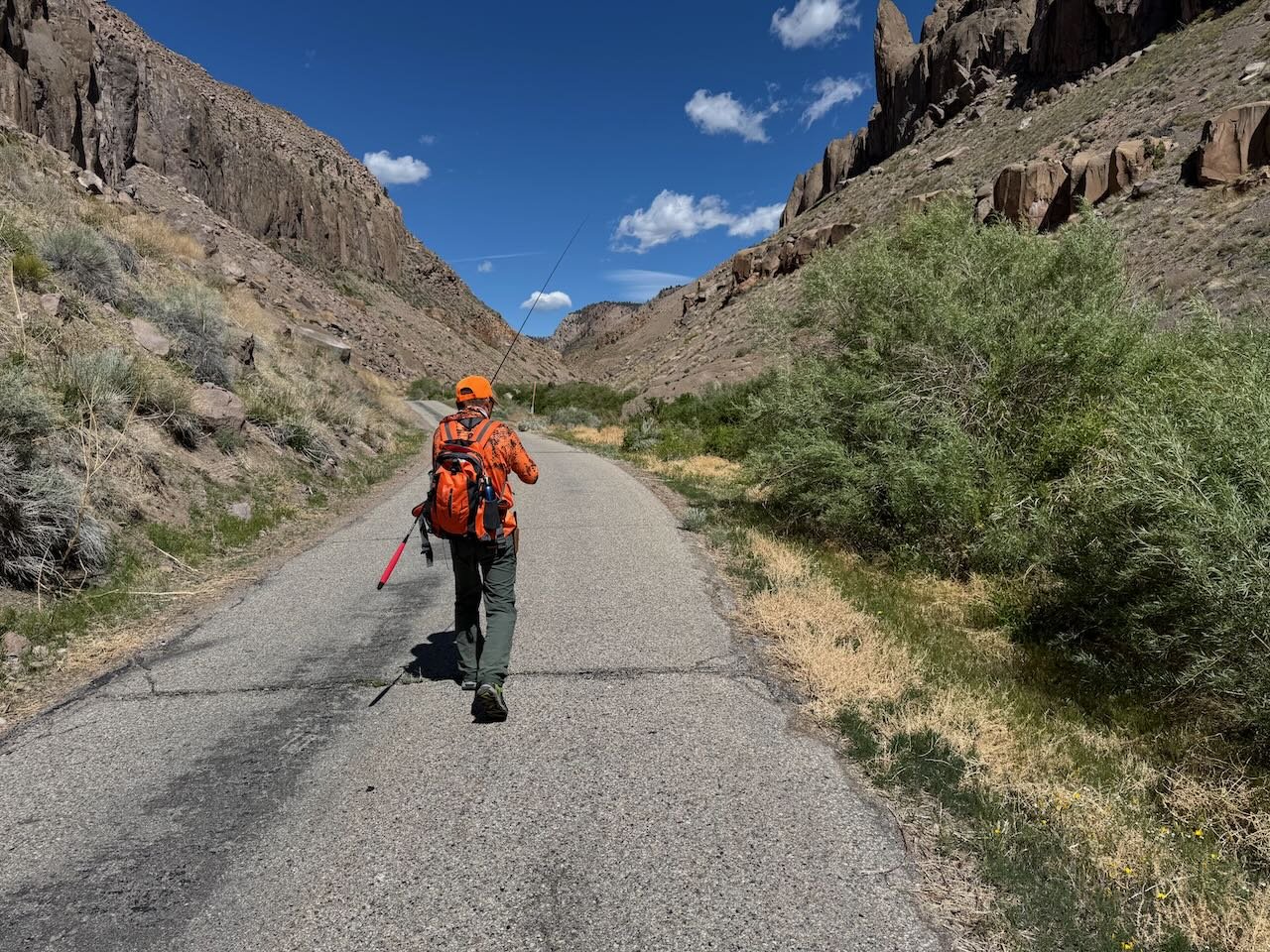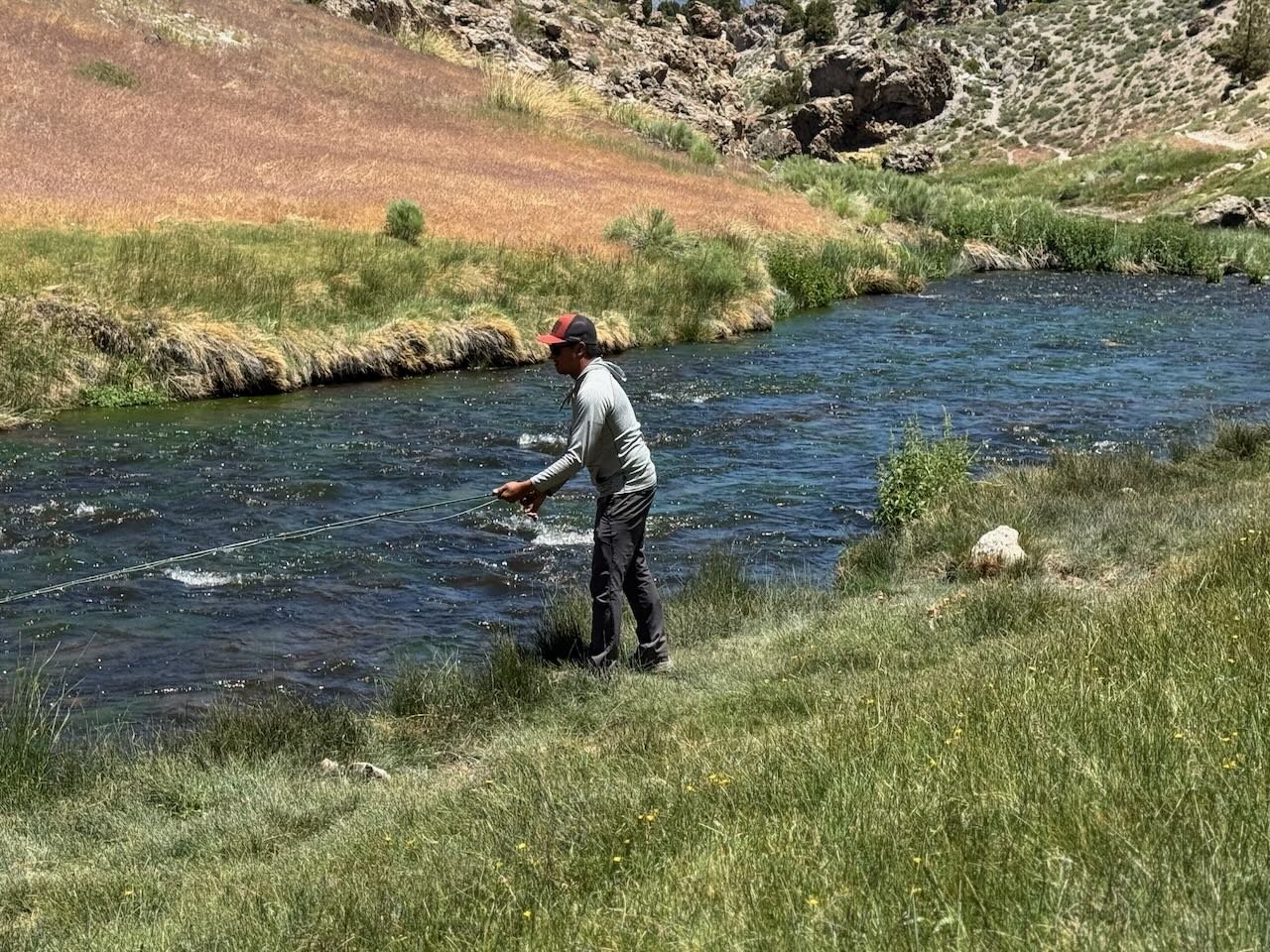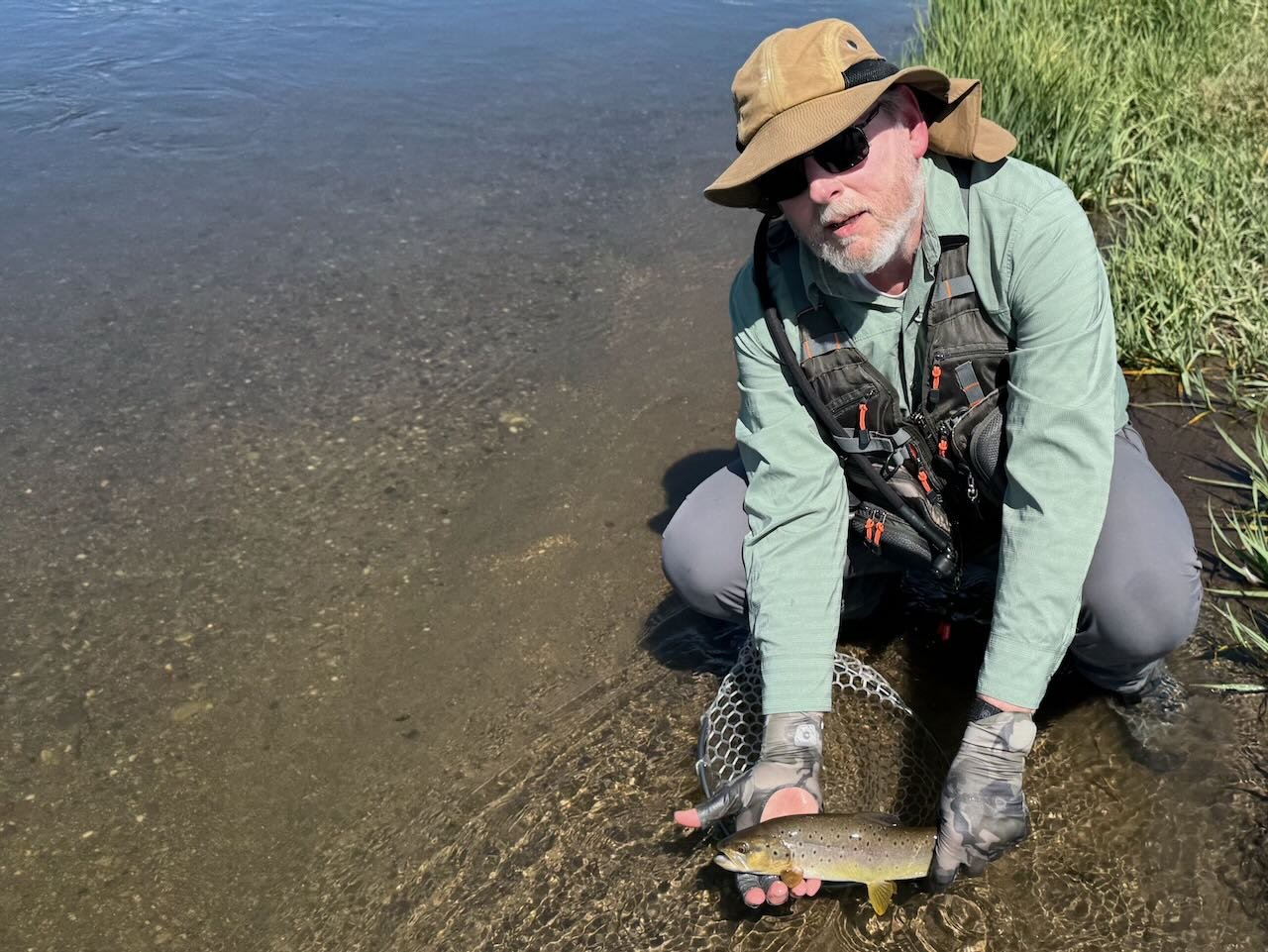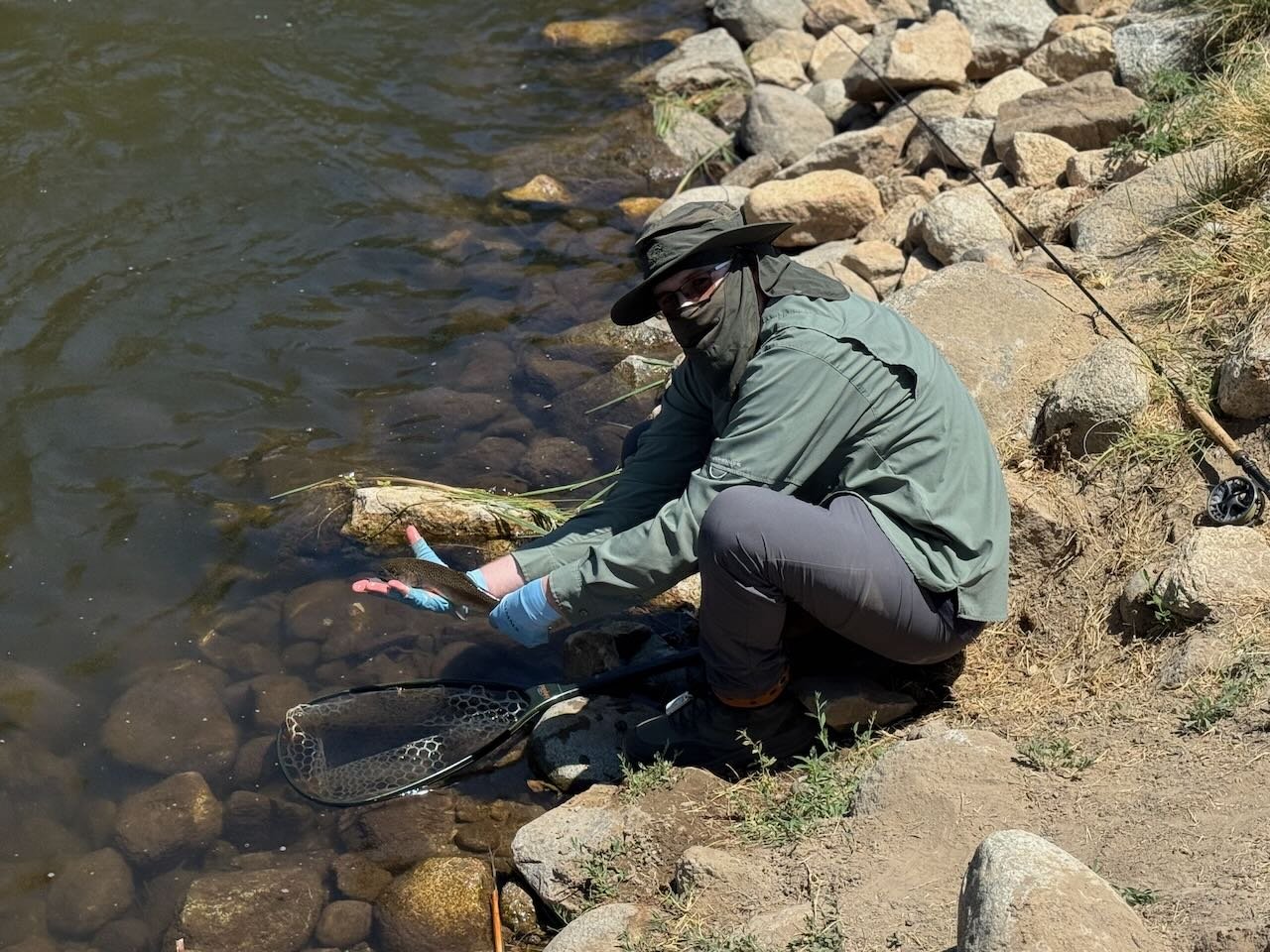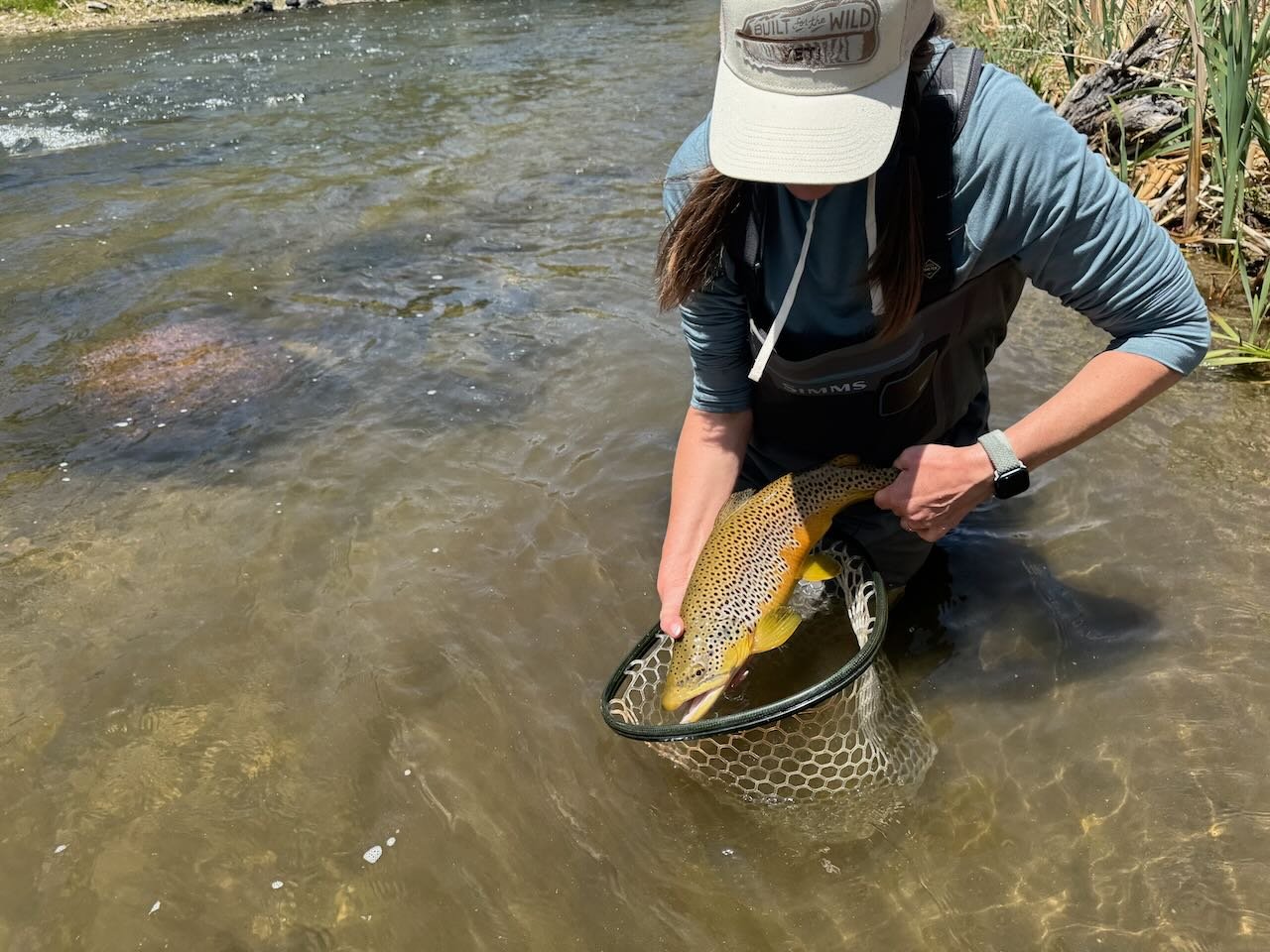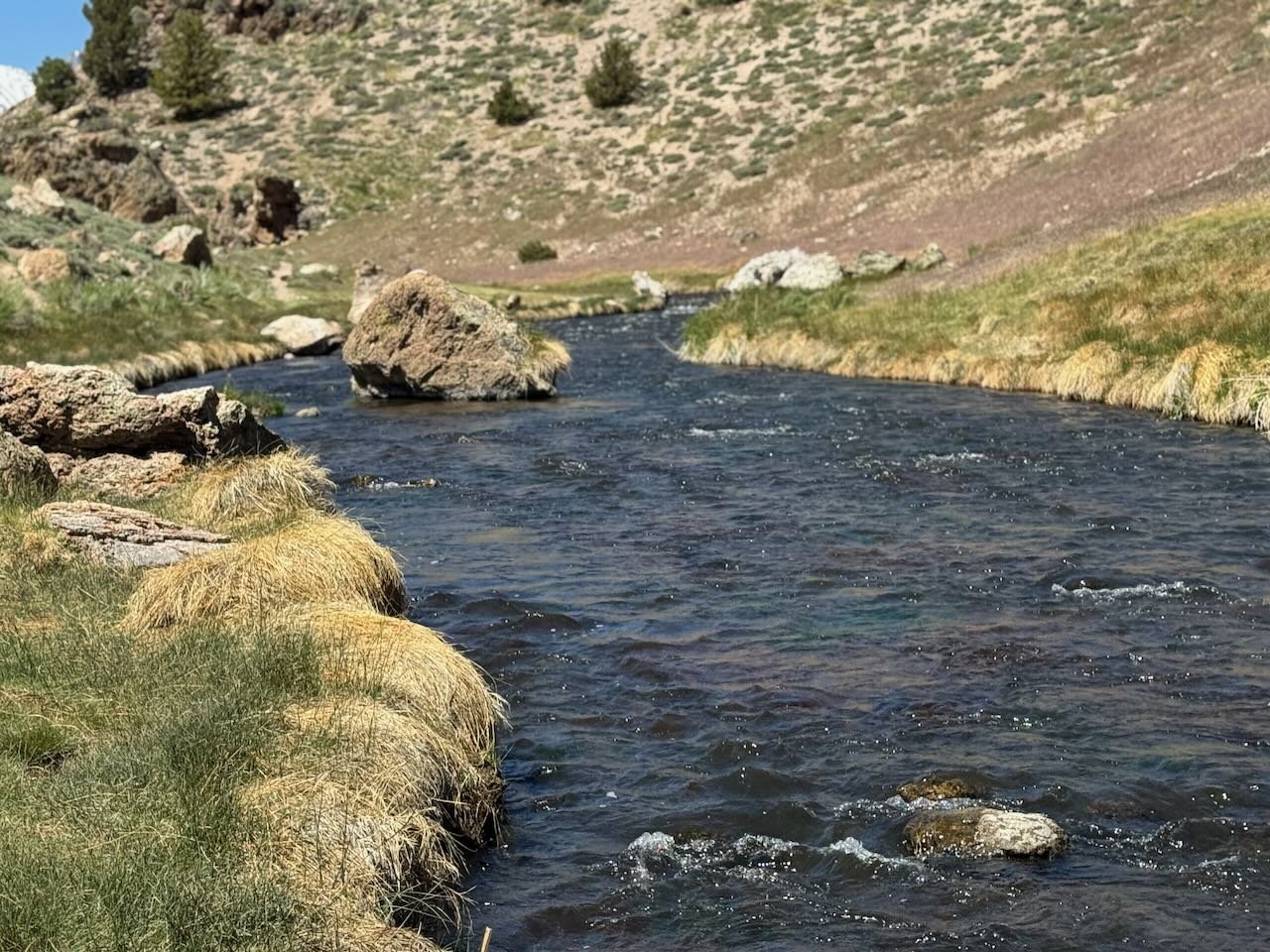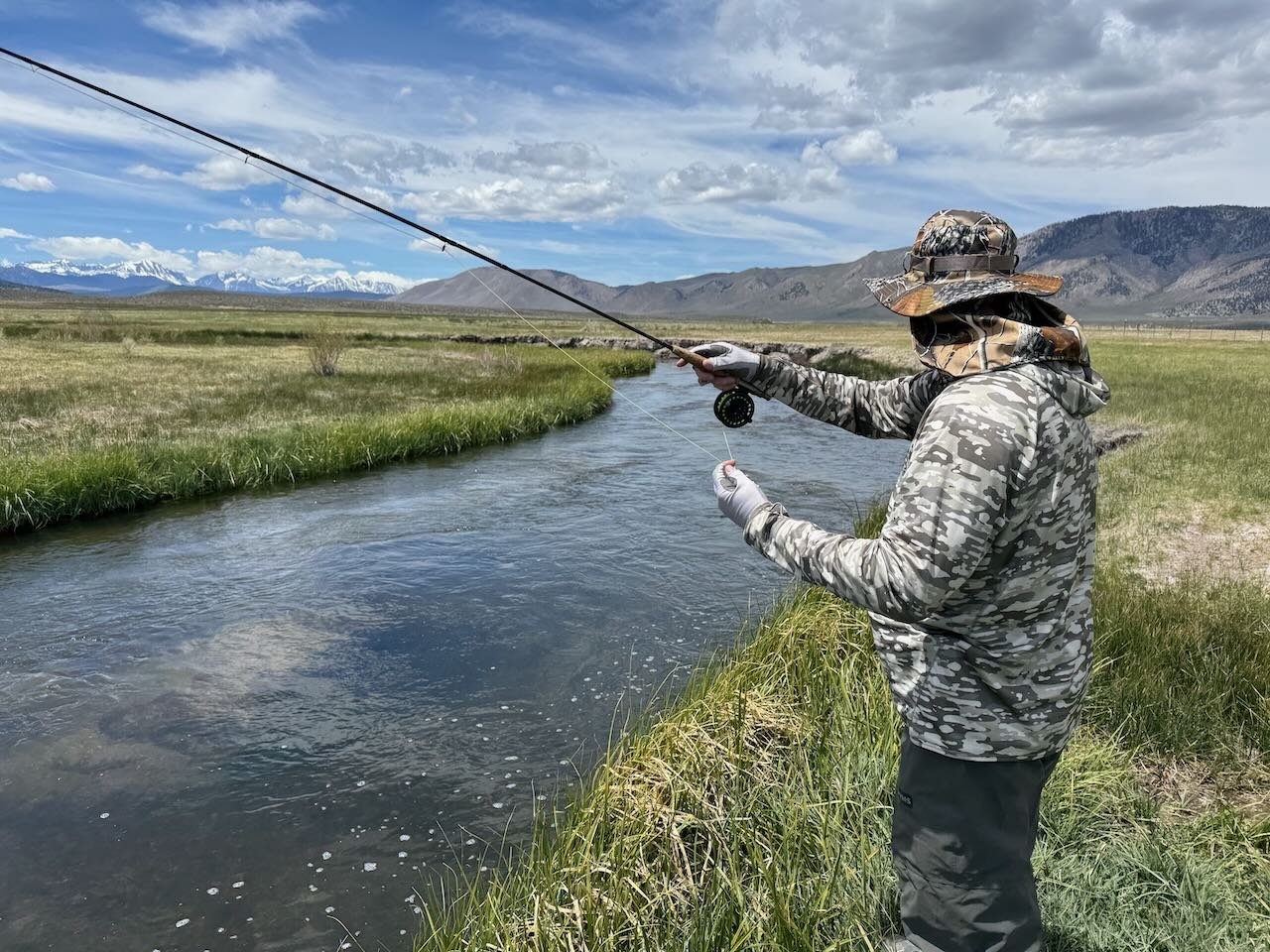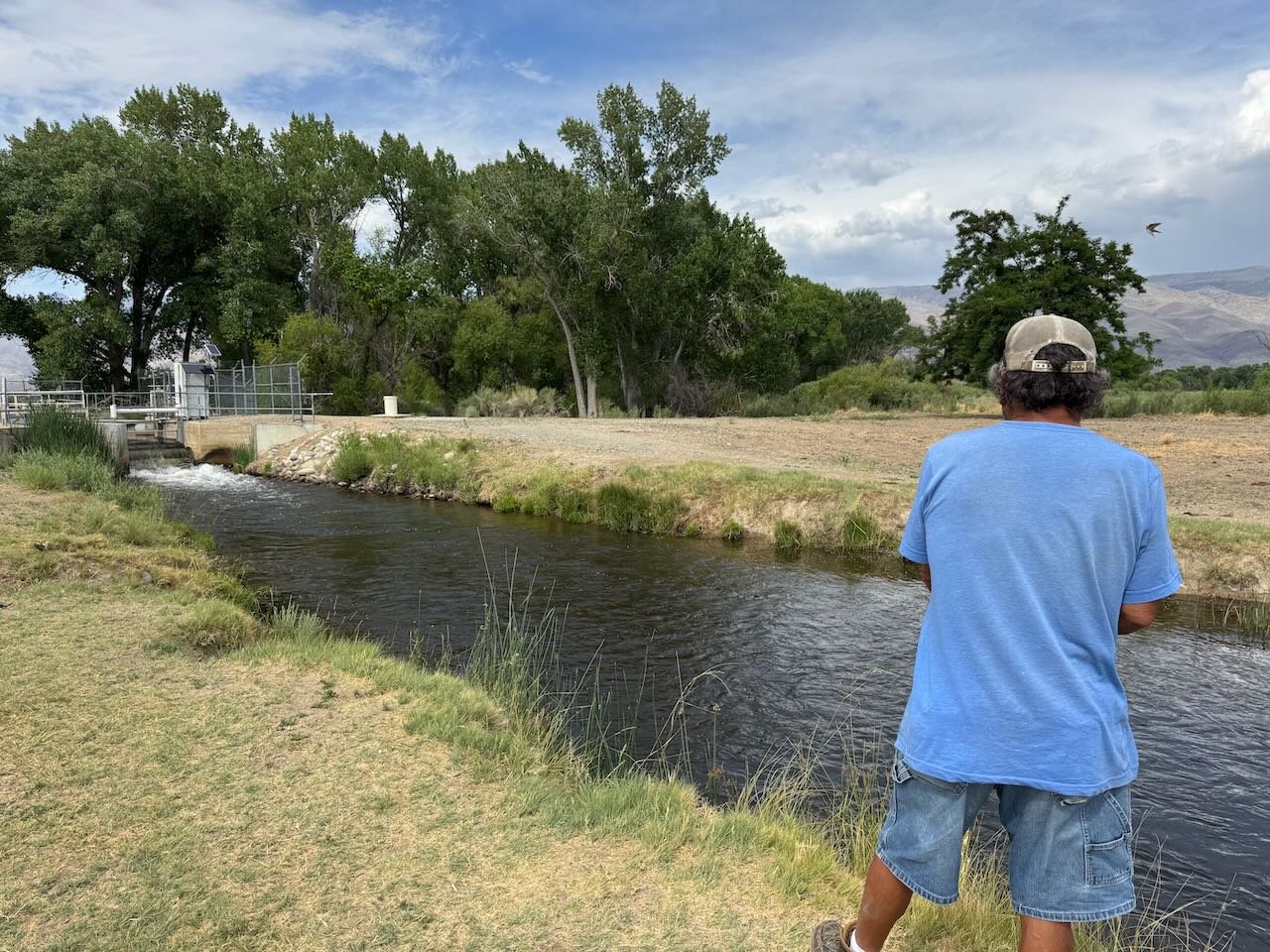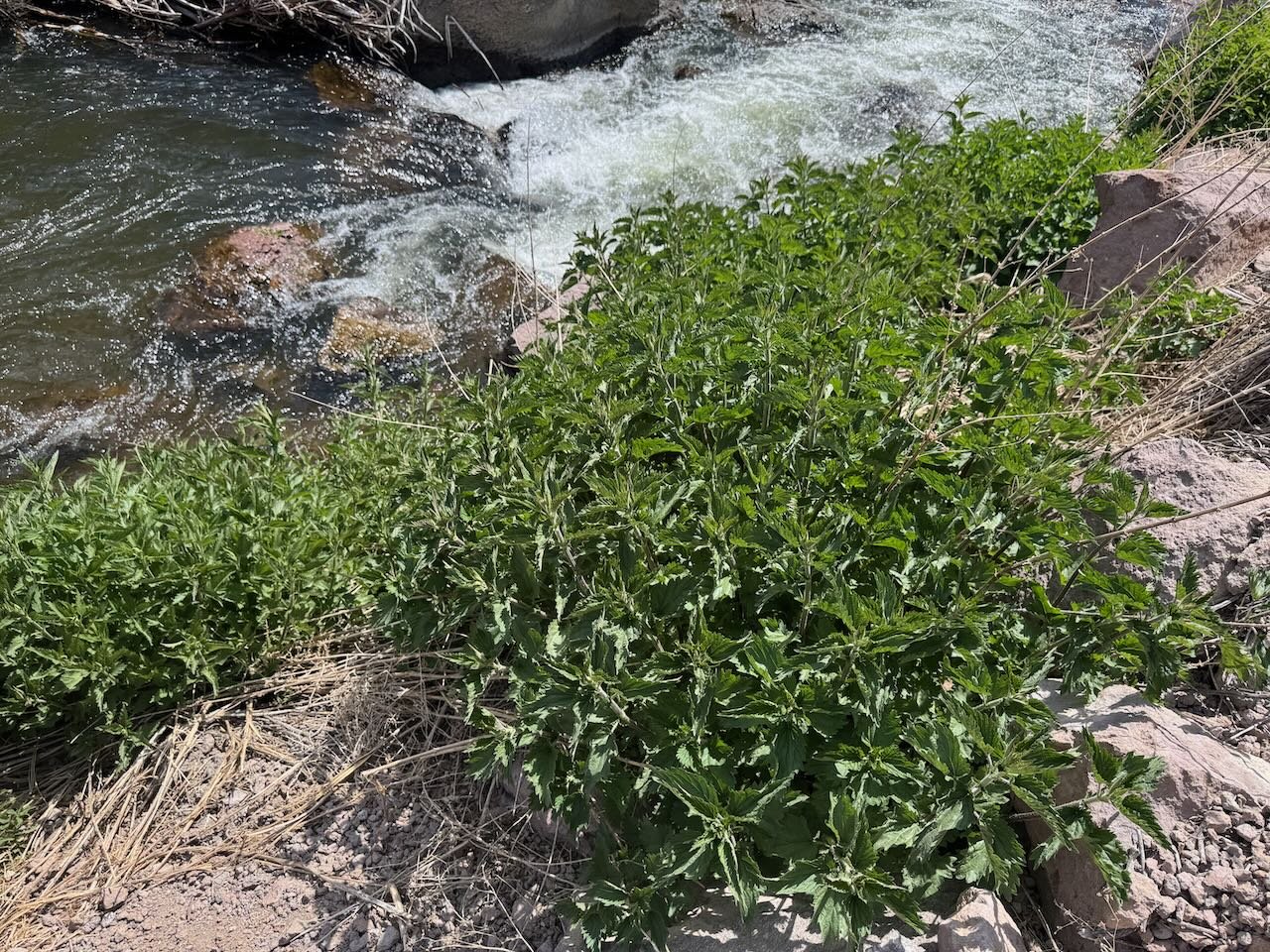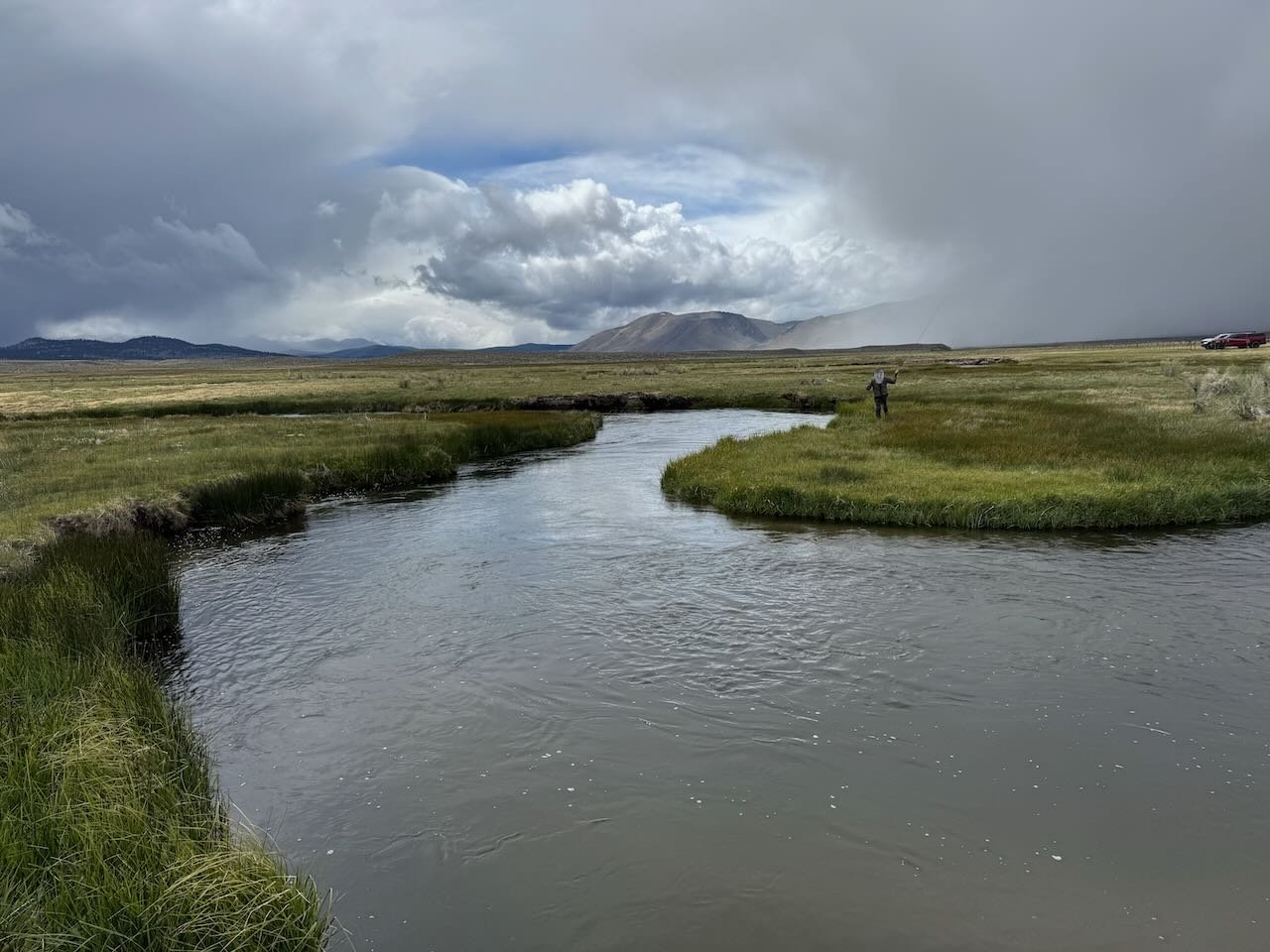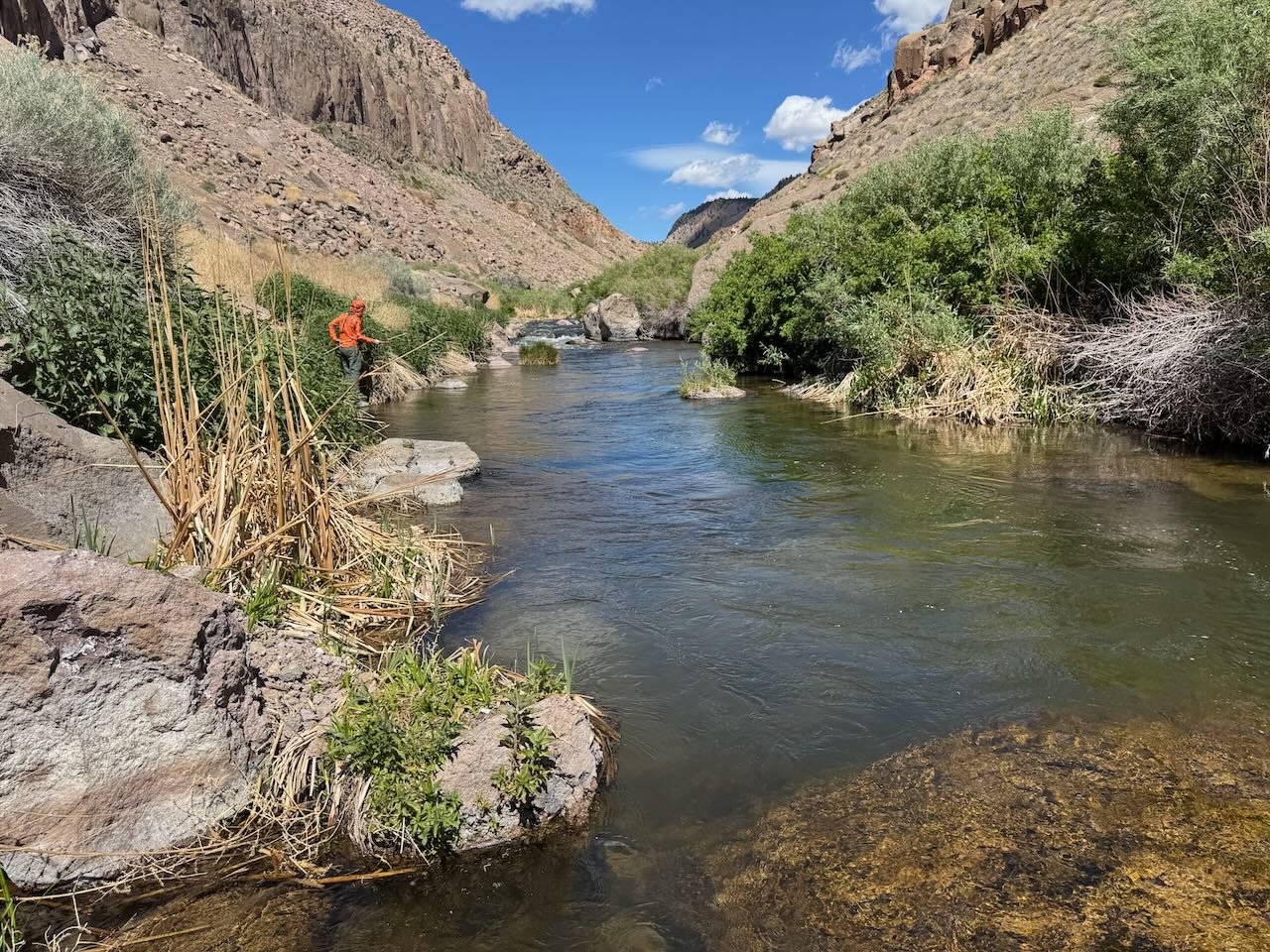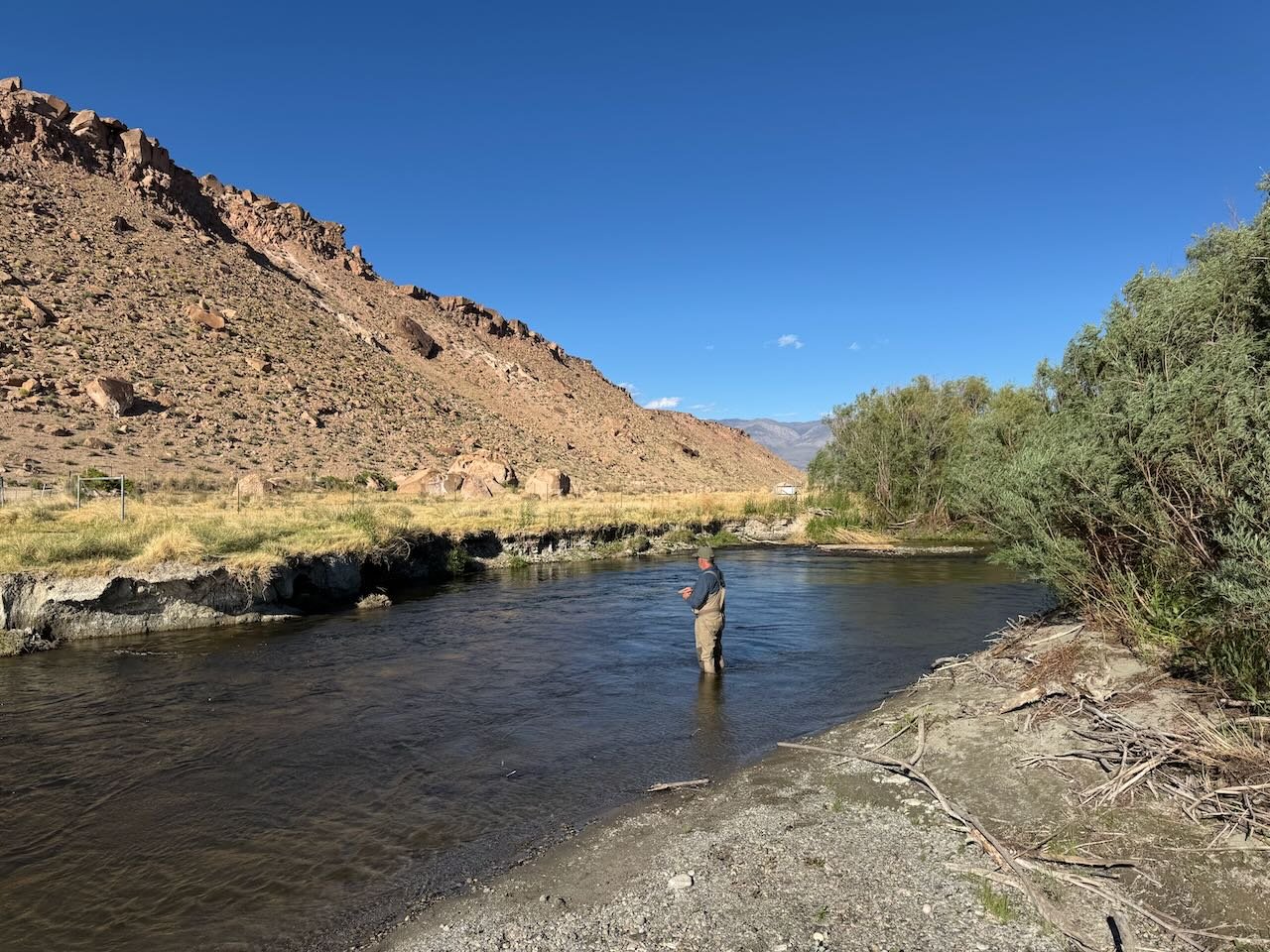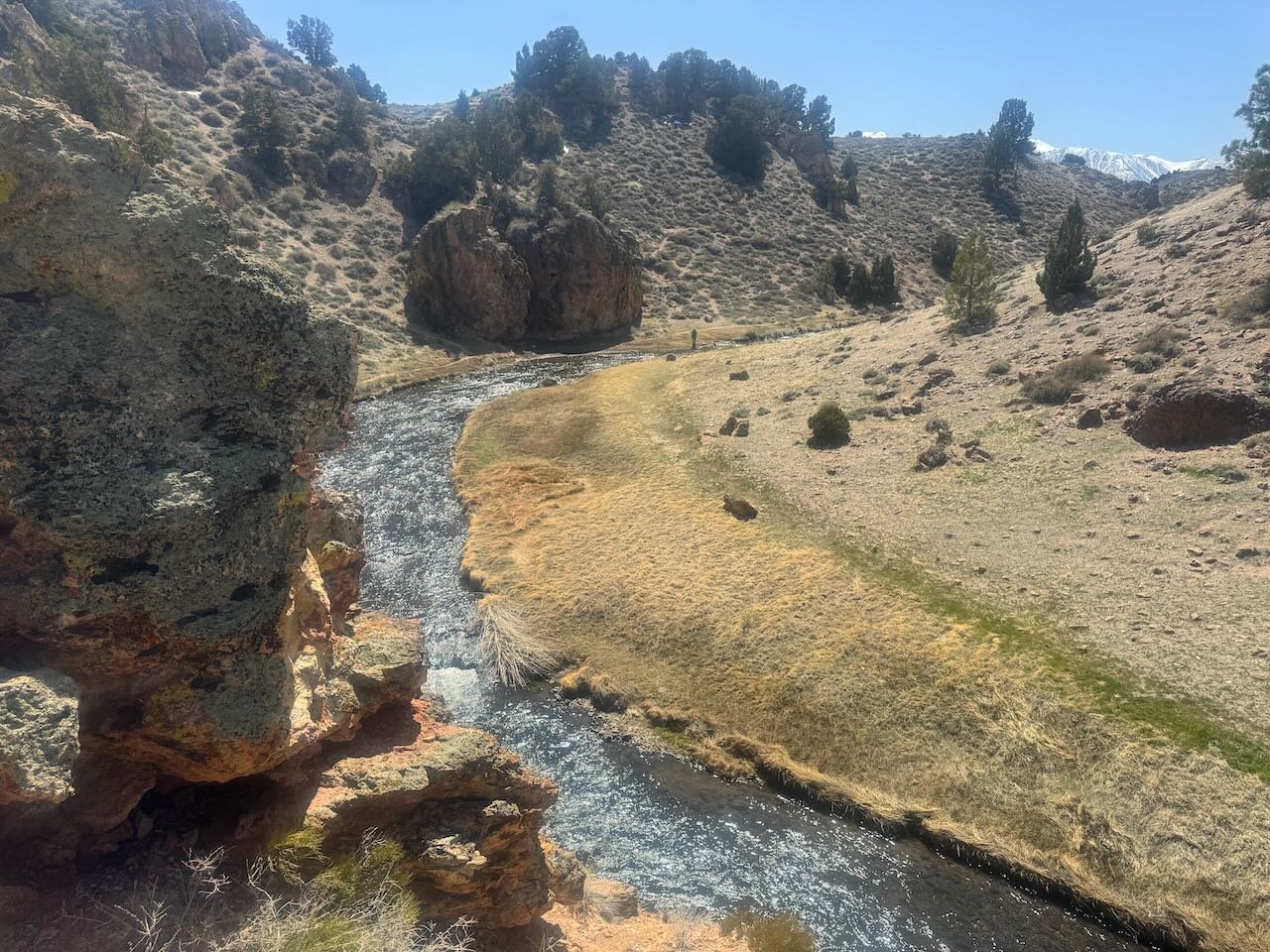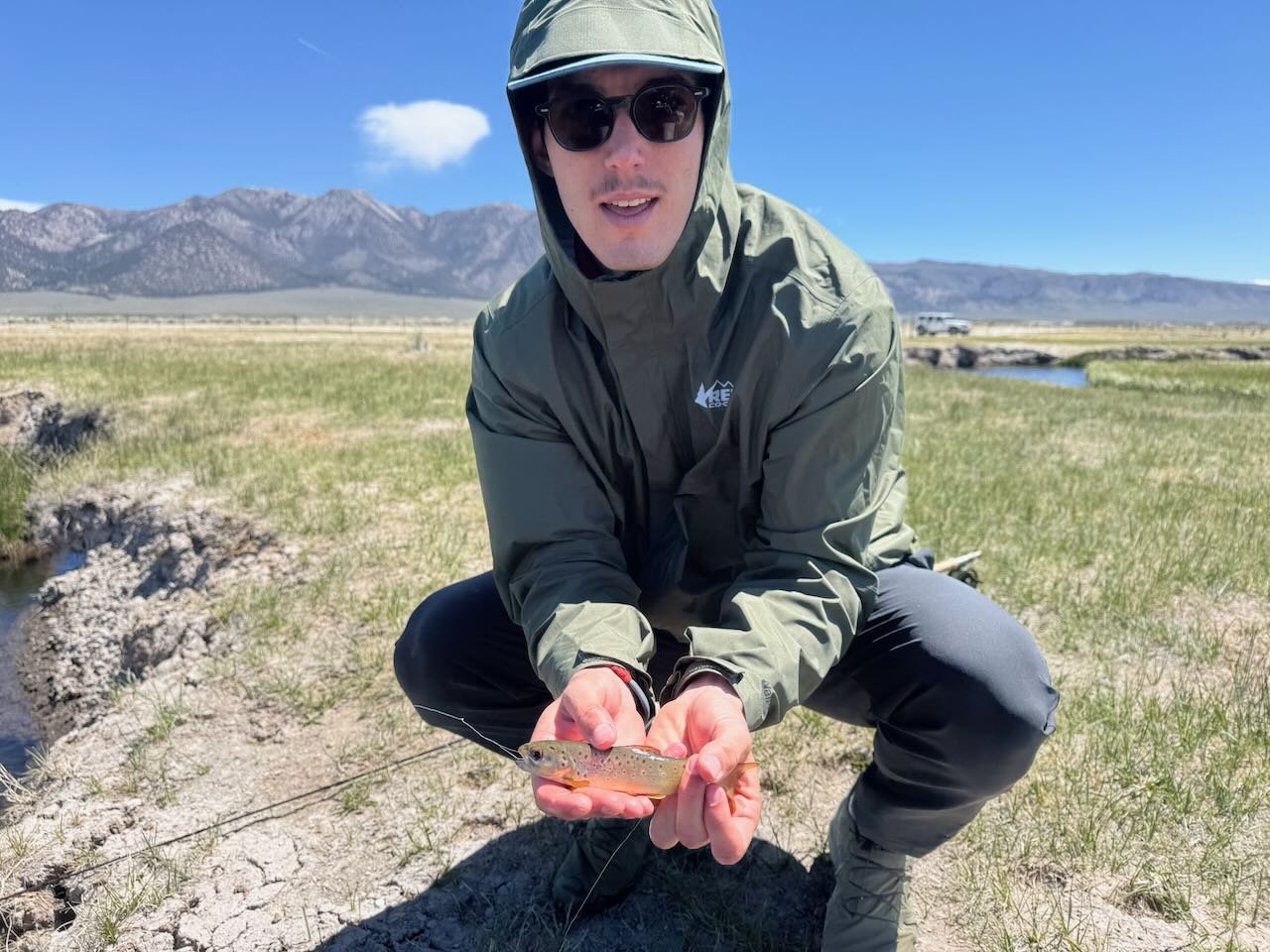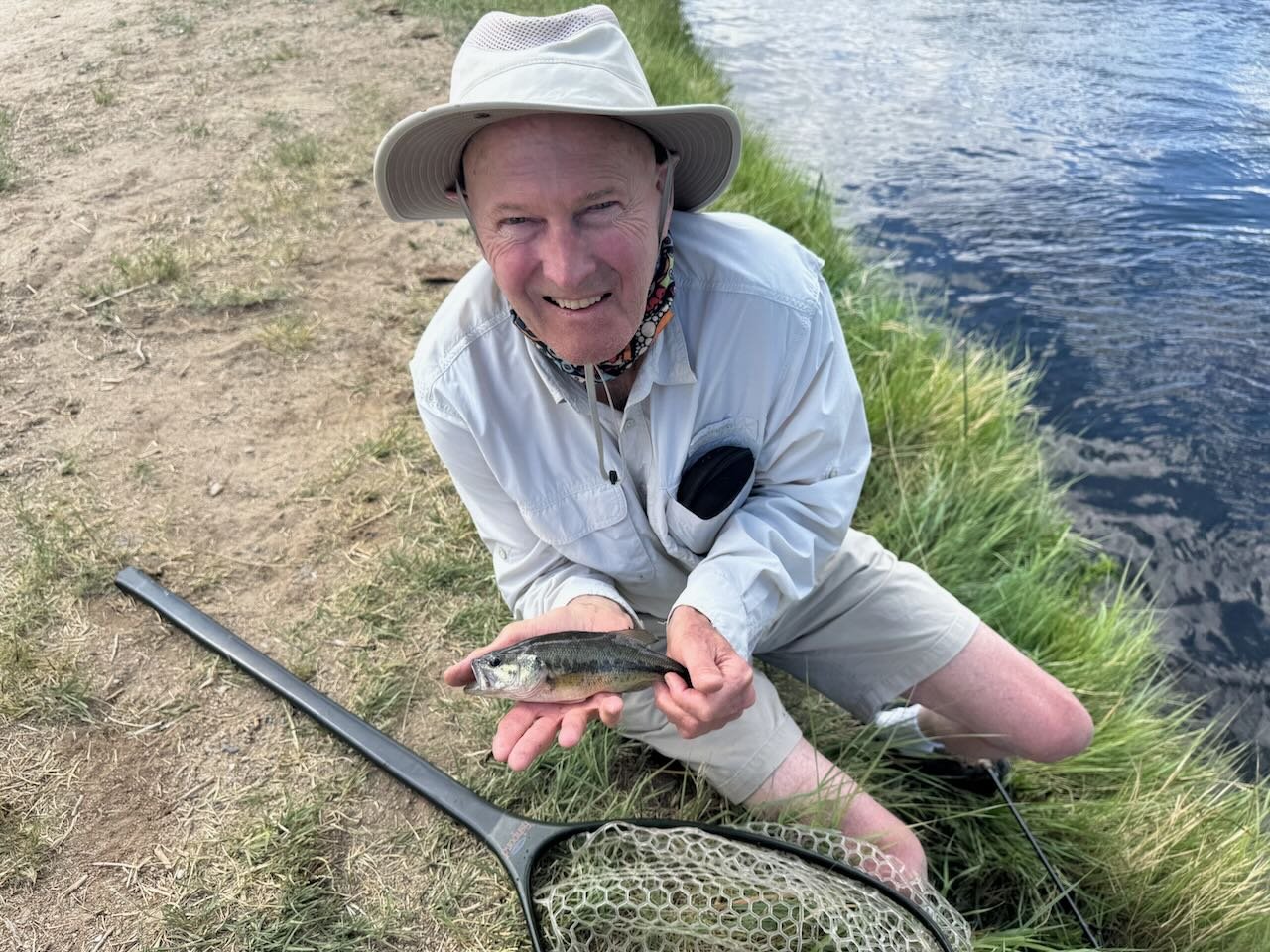Feels like summer in the Eastern Sierra. Depending on the altitude you are fly fishing at it’s in the high 90’s or low 80’s. Afternoon winds are interfering with fly fishing. Spring runoff is going and some waters are swollen with the increased water load from the melting snowpack. Mosquitoes are quickly becoming a nuisances. Pale morning dun mayflies, little yellow stoneflies, caddis and lake midges are hatching and feeding the trout. This is a great time of the year to catch a carp on the fly rod in the canals and still waters of the Owens Valley.
The locals coming to check us out as we fly fish Bishop Creek Canal behind Caltrans.
Owens River Gorge:
Owens River Gorge closed to public access for fish and wildlife habitat improvement from June 4th to 24th, 2025. No public access will be allowed within the Owens River Gorge from Long Valley Dam to the Control Gorge Power Plant. DWP will be performing a flushing flows event to fluff the stream bed. When the gorge reopens the weather will be hot, the stinging nettles will be in full growth and this is good rattle snake territory.
No entry into the Owens River Gorge from June 4th through June 24th.
Hot Creek
Interpretive Site:
Water in Hot Creek is up and slightly off color. Hatching mayflies and caddis flies are bringing a few trout to the surface. Fish with size 16 pale morning dun parachutes, size 20 blue wing olive parachutes, size 20 Adams parachutes, size 20 gray elk hair caddis and size 20 gray parachute caddis. Nymph with size 18 olive quilldigons, size 18 bead head flash back pheasant tail nymphs and size 20 tiger and zebra midges.
Brian Dimayuga learning to nymph fish in Hot Creek Canyon with a size 18 olive quilldigon.
Hot Creek
Canyon Section:
Nymphing with an indicator or a Euro rig is the most productive method of fishing Hot Creek Canyon right now. There are lots of wild rainbows and browns feeding on mayflies, stoneflies and caddis. Nymph with size 18 olive quilldigon, size 18 bead head flash back pheasant tail nymph, size 18 Frenchie, size 20 gray La Fontaines caddis emerger and a size16 bead head flash back gold ribbed hare’s ear nymph on the bottom of the stream. Key to success is not to get frustrated by all the weeds in the creek that your nymphs will hang up on. The nymphs will come out of the weeds if you use a snapping motion. Put slack in your line directly above where the nymph is stuck in the weeds. Before drag pulls out the slack pull up vigorously snapping the nymph out of the grips of the weeds. Be sure to pull up at an angle so that the freshly released nymphs avoid tangling with the rod. Runoff is a good time to pull a size 6 olive wooly bugger around the obstacles in the river that the bigger fish are using to stay out of the current.
Michael Ross proving he’s learning how to Euro nymph in the upper Owens River with a three fly rig.
Upper Owens River
Above Benton Crossing Bridge:
Mosquitoes and no-see-ums are pestering fly fishers fishing in the river. Hatching mayflies and caddis flies are feeding wild rainbows and browns to 12 inches. On the surface fish with a size 16 elk hair caddis, size 18 blue wing olive parachute, size 16 pale morning dun parachute, and size 16 Adams parachute. Under an indicator or on a Euro rig fish with size 18 midge nymphs in blood, tiger and zebra colorations, size 18 bead head flash back pheasant tail nymphs, size 16 bead head flash back gold ribbed hare’s ears and size 18 olive quilldigons. Afternoon winds are impacting the casts of fly fishers making fly fishing the river tough.
Connor Ross showing off a rainbow trout he caught while taking a Euro Nymphing Clinic on Bishop Creek Canal from Sierra Bright Dot.
Bishop Creek Canal
Behind Bishop Veterinary Hospital:
It has been warm middle of the day with temperatures in the mid-90’s. If you can put up with the heat the trout are still feeding on nymphs and dries. Nymphing the sandy slots between the weed beds with size 12 stoner nymphs, size 18 olive quilldigons, size 16 hot spot pheasant tail nymphs, size 16 SOS nymphs, size 18 Frenchie’s, size 18 bead head flash back pheasant tail nymph, size 18 olive quilldigons and size 16 bead head flash back gold ribbed hare’s ears is fooling wild brown trout and stocked rainbows to 14 inches. Skittering a caddis in the evening will imitate the ovipositing caddis and produce trout as long as you can put up with the swarms of mosquitoes.


